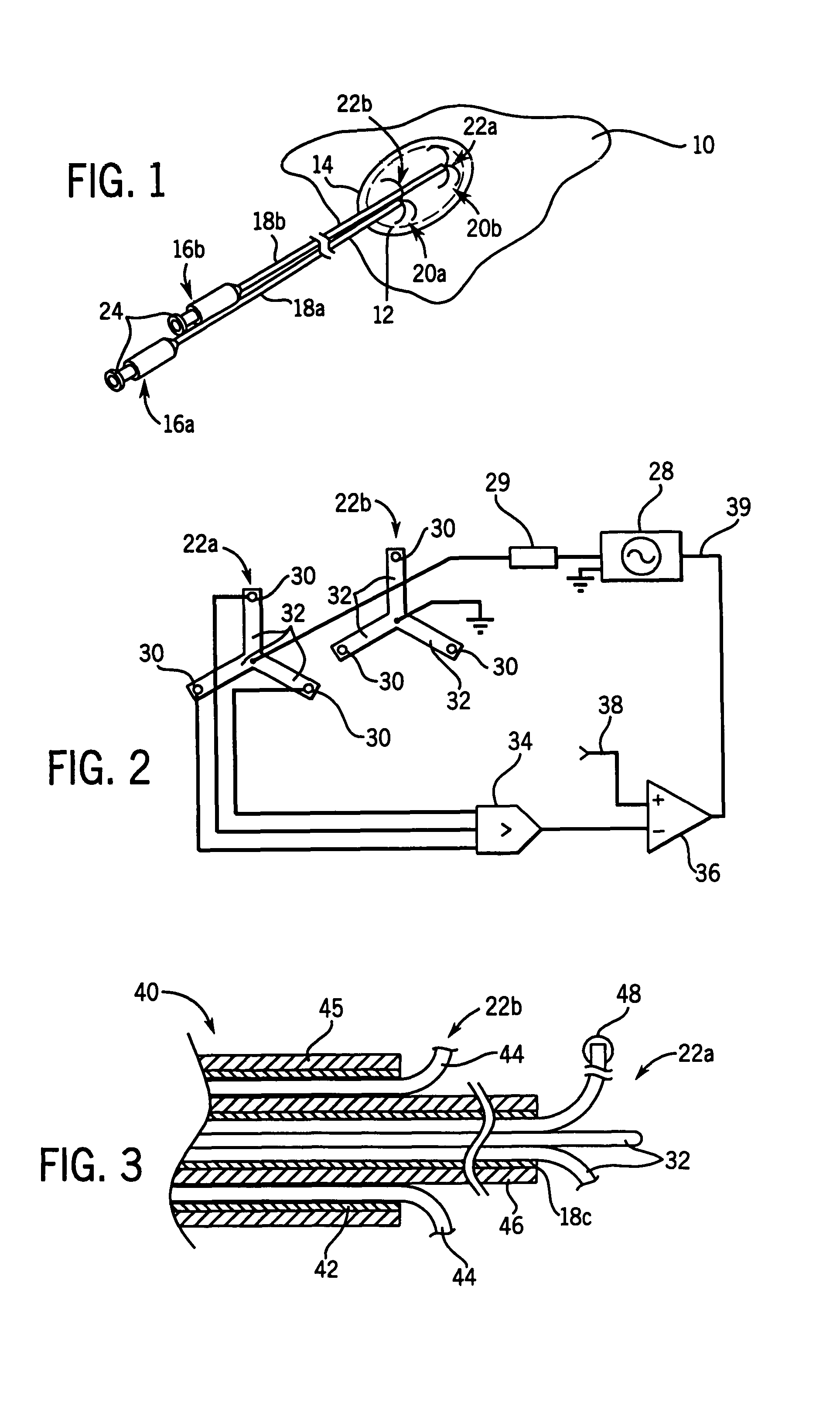Radio-frequency ablation system and method using multiple electrodes
a radiofrequency ablation and multiple electrode technology, applied in the field of radiofrequency ablation of tumors, can solve the problems of limited lesion size, resistance heating, loss of heat to the surrounding, etc., and achieve the effects of reducing electrical shielding, increasing treatment speed, and promoting large and uniform lesion siz
- Summary
- Abstract
- Description
- Claims
- Application Information
AI Technical Summary
Benefits of technology
Problems solved by technology
Method used
Image
Examples
Embodiment Construction
I. Bipolar Electrode Operation
[0039]Referring now to FIG. 1, a liver 10 may include a tumor 12 about which a lesion 14 will be created by the present invention using two umbrella-type electrode assemblies 16a and 16b having a slight modification as will be disclosed below. Each electrode assembly 16a and 16b has a thin tubular metallic shaft 18a and 18b sized to be inserted percutaneously into the liver 10. The shafts 18a and 18b terminate, respectively, at shaft tips 20a and 20b from which project trifurcated electrodes 22a and 22b are formed of wires 32. The wires 32 are extended by means of a plunger 24 remaining outside the body once the shafts 18a and 18b are properly located within the liver 10 and when extended, project by an extension radius separated by substantially equal angles around the shaft tips 20a and 20b. The exposed ends of the wires 32 are preformed into arcuate form so that when they are extended from the shafts 18a and 18b they naturally splay outward in a radi...
PUM
 Login to View More
Login to View More Abstract
Description
Claims
Application Information
 Login to View More
Login to View More - R&D
- Intellectual Property
- Life Sciences
- Materials
- Tech Scout
- Unparalleled Data Quality
- Higher Quality Content
- 60% Fewer Hallucinations
Browse by: Latest US Patents, China's latest patents, Technical Efficacy Thesaurus, Application Domain, Technology Topic, Popular Technical Reports.
© 2025 PatSnap. All rights reserved.Legal|Privacy policy|Modern Slavery Act Transparency Statement|Sitemap|About US| Contact US: help@patsnap.com



